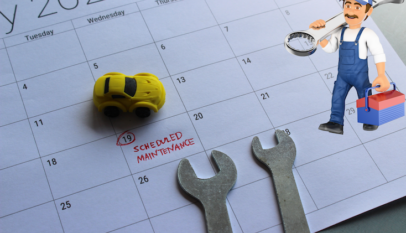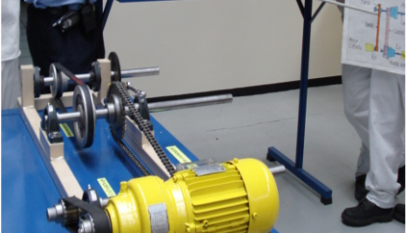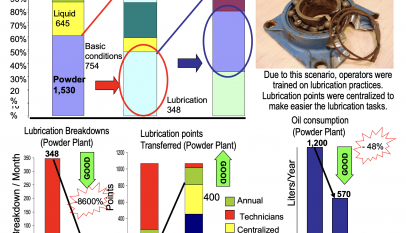This post aims to share good practices of the Planned Maintenance system, explain why these practices need to be applied, and share useful forms. How to apply these tools will depend on each factory’s features.
Implementing a successful maintenance system is a cultural change. Based on local culture, technicians’ skills and performance, each factory must identify the best way to implement these tools, and some changes will be required.
- Current Situation
- Develop Objectives
- Maintenance System
- Master Plan
- Action Plan
- Implementation
Current Situation
Many organizations today are still in a reactive, firefighting mode regarding maintenance. They wait for equipment to break down or malfunction before taking action, leading to costly downtime and repairs. This approach can also lead to safety risks for workers and impact product quality or service delivery. To move towards a more proactive and efficient maintenance system, it’s essential to develop clear objectives and an implementation plan.
The first step to implementing the Planned Maintenance system in a factory is to identify the current situation. To do this, use the 4M, using the terms given below:
- Machine: Equipment
- Method: Maintenance System
- Man: Maintenance Technician
- Material: Spare Parts
Since each factory is unique and has different equipment and people, they will have different problems. The current situation/problem identification will drive the activities in the factory. It is very important to identify the right problems in the factory. Below there is an example of the current situation utilizing the 4M’s (create fishbone – the effect is “maintenance id working in firefighting mode”):
Machine: Equipment
- Continuous repetitive breakdown
- No records of equipment history
- Number of breakdowns showing an upward trend
- Downtime due to breakdowns increasing
- Lack of knowledge of spare parts usage
- No evaluation of breakdowns
Method: Maintenance System
- High Maintenance Cost
- No Work Order System
- No maintenance planner(s)
- The high number of unplanned activities
- Low PM completion
- Systematic maintenance is limited to site maintenance.
Man: Maintenance Technician
- Not trained in root cause analysis
- Maintenance technician performing reactive work (repair breakdowns only)
- Variation of the skill level of mechanics Accepted as “Status Quo.”
Material: Spare Parts
- Lack of spare parts
- Long search time to locate spare parts
- Non-conforming of parts
- Obsolete parts in inventory
- The turnover rate of spare parts is unknown
Develop Objectives
The first step in transitioning to a world-class maintenance system is to develop clear objectives. This could include reducing downtime, improving equipment reliability, increasing safety, or reducing maintenance costs. It’s essential to involve key stakeholders, including maintenance staff, production teams, and management, to ensure that objectives align with overall business goals. Once the problems are known, it is time to use this information to develop the objectives. Also, you must look for the challenges and results the factory needs to deliver. Below there is an example of the objectives established for a factory.
Equipment
- Reduce the number of breakdowns
- Avoid Repetitive Breakdown
- Reduce downtime due to breakdown
- Develop spare parts history
- Reach Zero Breakdown in equipment
Maintenance System
- Reduce maintenance cost
- Manage maintenance activities
- Plan and document maintenance activities
Maintenance Technician
- Train mechanics in Root-Cause Analysis
- Perform proactive activities
- Develop skill level of mechanics
Spare Parts
- Reduce the lack of spare parts
- Reduce search time to locate parts
- Eliminate obsolete parts
- Control inventory levels
Maintenance System
Once objectives have been established, the next step is to design a maintenance system that supports those objectives. This could involve creating a preventive maintenance program, implementing condition-based maintenance, or using predictive maintenance technologies such as sensors or machine learning algorithms.
The key is to develop a system tailored to the organization’s specific needs that can be sustained over time. After identifying the problems and establishing the objectives is time to develop the Maintenance System for the factory. Use the eight elements approach. Each element and its tools must be implemented to help the factory achieve its objectives faster. For instance, for the Spare Parts Administration, a factory with high stock outages will work differently than another with a high inventory level.
Master Plan
With a maintenance system in place, the next step is to develop a master plan that outlines the key activities and timelines for implementation. This plan should include the tasks required to establish the new maintenance system and any training or resources needed to support the transition. Establishing realistic timelines and milestones is essential to ensure that progress can be tracked and adjustments made as needed.
After establishing the Maintenance System, it is time to define its implementation. The challenge is to have the entire team working in the same direction, using the same approach for the problems and monitoring the work progress. The best tool to reach this is a Master Plan. A three-year Master Plan is recommended because everyone can see what will happen in the following years and the results the Effective (Planned) Maintenance Pillar will bring for the factory. Indicators to monitor the program’s evolution in terms of benefits must be developed because it is possible to visualize the objectives of each activity and see if it is being achieved.
During the implementation of an activity, indicators will help to identify if the activity is being implemented well. Something is wrong if the Zero Breakdown Activities are not reducing the number of breakdowns in the factory. What is this? Use the indicators to monitor if the program is going in the right direction and to help to take measures to improve the system. The breakdown analysis template can be found here.
To develop the Master Plan, use the following steps:
- Identify the main objectives for Maintenance Department in the factory, for instance:
- Zero Breakdown,
- Maintenance Cost Reduction.
- For each objective, establish the activities that will be developed:
- Support to Production Department,
- Zero Breakdown Activities.
- For each Activity, there are two possible approaches:
- Proactive: Activities to prevent the loss,
- Reactive: After the loss occurrence, this activity will prevent its recurrence.
- Identify in each approach the method and tools that will be used/ developed:
- Establish a Methodology to Analyze Repetitive Breakdowns
- Support to skills upgrades for Production Department (fasteners, tools, gearboxes, pneumatics, hydraulics, valves, pumps, etc.)
- Establish indicators to monitor the evolution of each method and tool. This will help to monitor the efficiency of the activity and help to improve.
- Determine the timeline of each activity.
Action Plan
Once the master plan is developed, the next step is to develop an action plan outlining the steps required to implement the new maintenance system. This may involve hiring new staff, investing in new technologies, or changing existing processes and procedures. To ensure a smooth transition, the key is to identify and address any potential barriers or challenges upfront.
- Identify the project’s scope: Clearly define the boundaries of the maintenance system being implemented. Determine what equipment or processes will be covered and who will maintain them.
- Define roles and responsibilities: Assign specific roles and responsibilities to team members involved in the project. This may include a project manager, maintenance staff, production teams, and management.
- Develop a timeline: Create a detailed timeline for implementing the new maintenance system. Identify key milestones and deadlines, and make sure they are realistic and achievable.
- Allocate resources: Determine the resources needed to implement the new maintenance system. This may include funding for new technologies, equipment, or staffing and training for maintenance staff and other team members.
- Identify potential roadblocks: Identify potential obstacles or barriers that may arise during the implementation process. This could include resistance from staff or management, logistical challenges, or technical difficulties.
- Develop contingency plans: Create contingency plans for addressing potential roadblocks. Identify alternative strategies or solutions to keep the project on track.
- Pilot the new maintenance system: Test the new maintenance system in a small area or on a few critical pieces of equipment before scaling up to the entire organization. This will help identify any issues or challenges that must be addressed before a full rollout.
- Communicate with stakeholders: Communicate regularly with all stakeholders involved in the project. Provide updates on progress, share successes, and address any concerns or questions.
- Monitor and evaluate: Continuously evaluate the new maintenance system to ensure it achieves the desired results. Collect feedback from staff and other stakeholders, and make adjustments as needed.
By following these steps, organizations can develop a detailed action plan for implementing a new maintenance system tailored to their needs and goals. This will help ensure a smooth transition and set the stage for ongoing success in maintenance and reliability.
Implementation
Finally, it’s time to implement the new maintenance system. This may involve piloting new processes or technologies in a small area before scaling up or a more comprehensive rollout across the organization. Monitoring progress, making adjustments as needed, and providing ongoing training and support to ensure staff are comfortable with the new system are essential.
In conclusion, transitioning from a reactive, firefighting mode to a world-class maintenance system requires a clear set of objectives, a tailored maintenance system, a detailed master plan, a comprehensive action plan, and ongoing implementation and support. By taking a proactive approach to maintenance, organizations can improve equipment reliability, reduce downtime and costs, and ensure the safety and quality of their products and services.
















